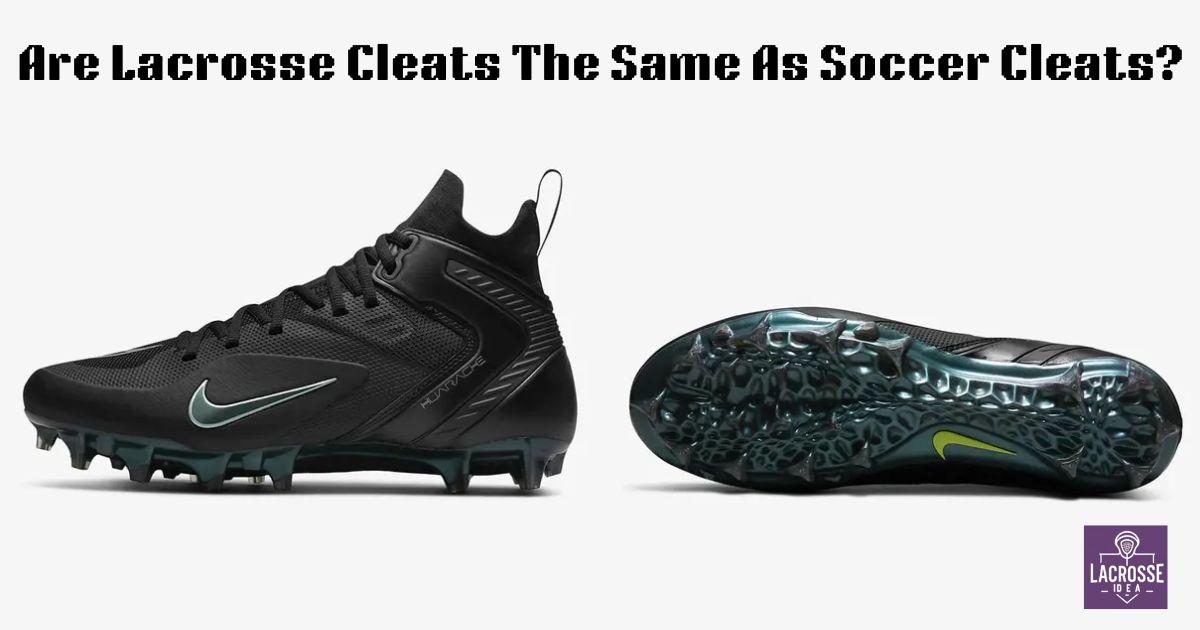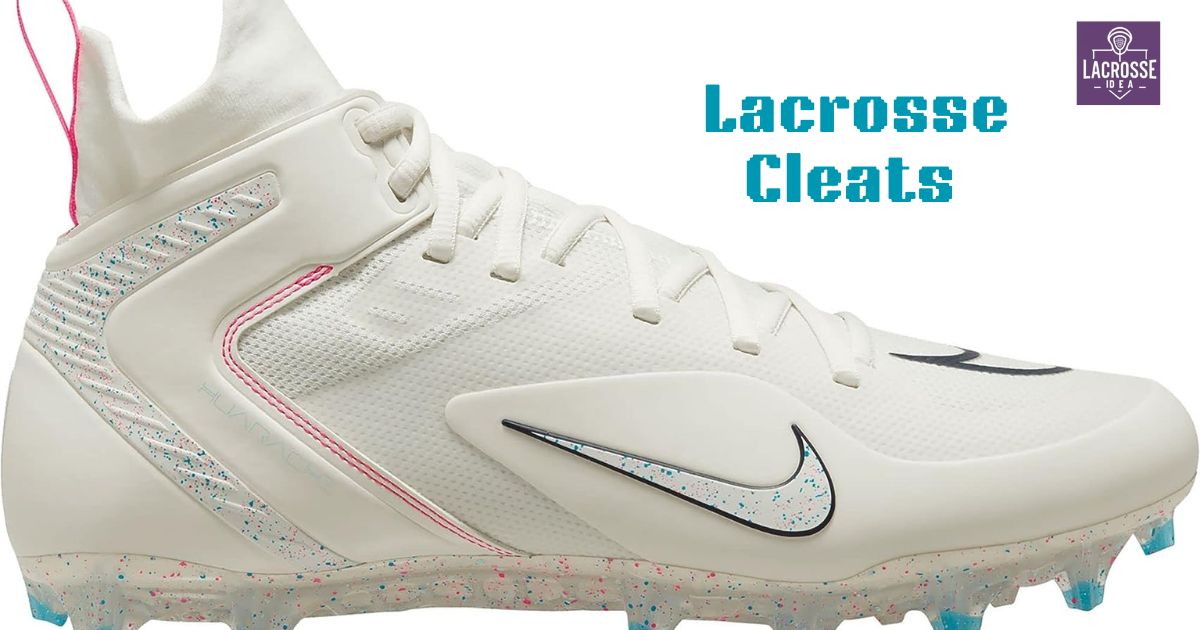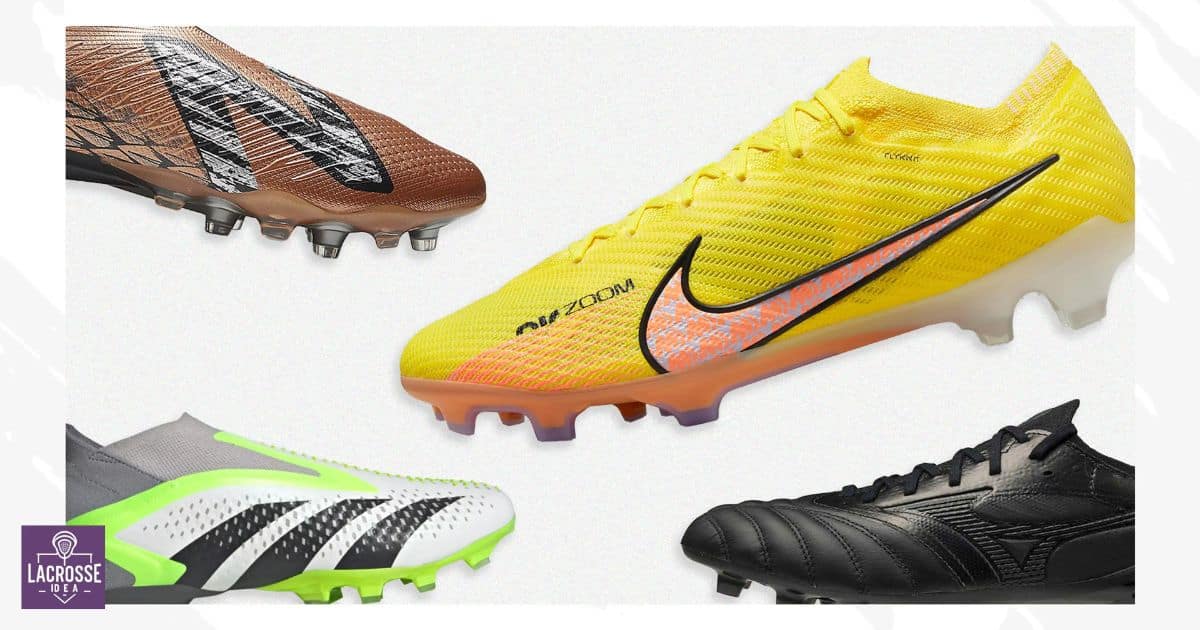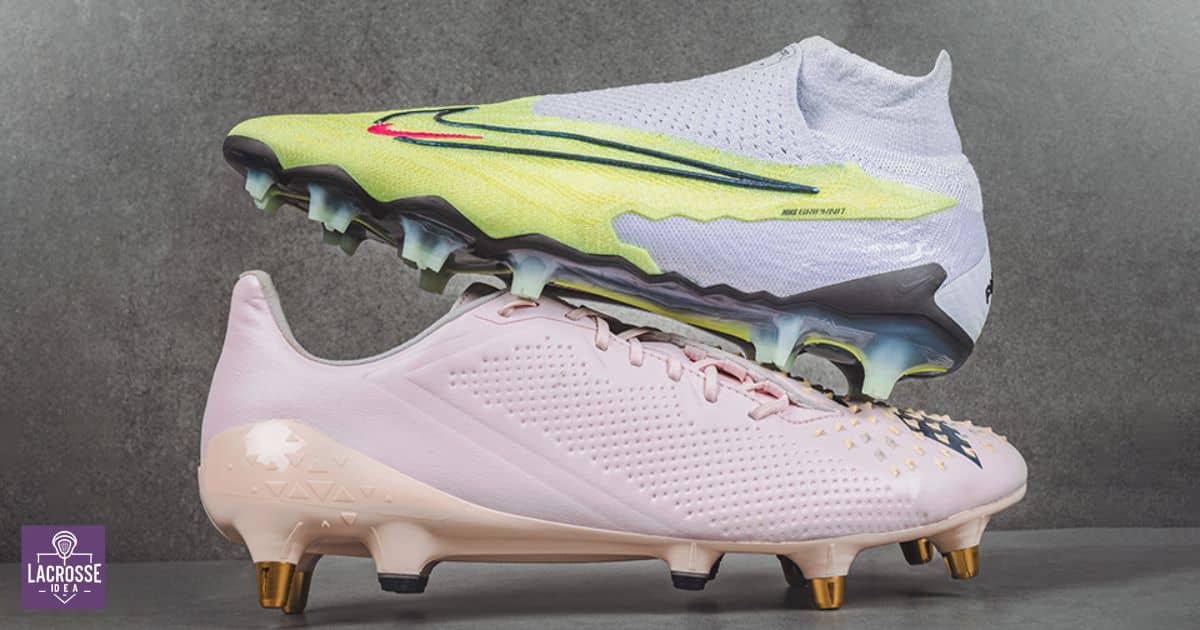When it comes to choosing the right footwear for athletic activities, it’s important to consider the specific requirements of each sport. In the case of lacrosse and soccer, one may wonder if the cleats used for these sports are interchangeable. In this article, we will explore the question: Are lacrosse cleats the same as soccer cleats?
By examining the key differences between these two types of cleats, we can gain a better understanding of their suitability for each sport. Whether you are a dedicated lacrosse player, a passionate soccer enthusiast, or simply curious about the intricacies of athletic footwear, this discussion aims to provide valuable insights into the world of lacrosse cleats versus soccer cleats.
Key Takeaways
- Lacrosse cleats prioritize stability and ankle support, while soccer cleats prioritize agility and quick directional changes.
- Lacrosse cleats have a more aggressive stud pattern for superior traction on multiple surfaces, while soccer cleats have a stud configuration optimized for grass fields.
- Lacrosse cleats are built to withstand the physical nature of the sport and provide grip on grass and turf, while soccer cleats focus on lightweight construction and flexibility for quick turns and swift movements on grass fields.
- Lacrosse cleats can be used for soccer as a versatile option, providing traction and support on multiple surfaces, while soccer cleats can be used for lacrosse as a cost-effective option suitable for both grass and turf fields.
What Are Lacrosse Cleats?
Lacrosse cleats are specialized footwear designed specifically for playing lacrosse. They are engineered to provide the necessary traction, stability, and support required for the fast-paced and dynamic nature of the sport. Unlike soccer cleats, lacrosse cleats have unique features that cater to the specific demands of lacrosse players.
- Sub-list 1:
- Enhanced ankle support for quick direction changes and lateral movements
- Aggressive traction patterns to grip the field and prevent slipping
- Sub-list 2:
- Lightweight construction for increased speed and agility
- Reinforced toe caps for added durability and protection during intense gameplay
Lacrosse cleats not only offer functional benefits but also contribute to a sense of belonging within the lacrosse community. Wearing lacrosse cleats helps players feel connected to the sport, their team, and their fellow lacrosse enthusiasts. It signifies their dedication and commitment to the game, fostering a sense of camaraderie and shared identity.
What Are Soccer Cleats?
Soccer cleats are specialized footwear designed specifically for playing soccer. These shoes are essential for players as they provide the necessary traction and support on the field. Soccer cleats typically feature studs or spikes on the sole, which help players maintain stability and grip on different playing surfaces, such as grass or artificial turf. The design of soccer cleats also takes into consideration the quick movements, changes in direction, and frequent kicking involved in the sport.
They are lightweight and flexible, allowing players to move swiftly while maintaining control. Additionally, soccer cleats often have a low-profile design to minimize interference with ball contact. With their unique features and purpose-built design, soccer cleats are a crucial component for anyone looking to participate in the sport and perform at their best.
The Differences Between Soccer And Lacrosse Cleats
In comparing soccer cleats and lacrosse cleats, it is important to note the distinct differences in their design and functionality. While both types of cleats are designed to provide traction and support on the field, they are tailored to meet the specific needs of each sport.
Here is a comparison of soccer cleats and lacrosse cleats:
| Soccer Cleats | Lacrosse Cleats |
|---|---|
| Lower profile design | Mid-high cut design |
| Firm ground soleplate | Flexible soleplate |
| Focus on agility and ball control | Emphasis on ankle support and stability |
Soccer cleats are known for their lower profile design, which allows for greater agility and ball control. They typically have a firm ground soleplate that provides traction on various playing surfaces. On the other hand, lacrosse cleats have a mid-high cut design that offers ankle support and stability during quick movements and changes in direction. They also have a more flexible soleplate to accommodate the running and cutting movements required in lacrosse.
Can You Wear Lacrosse Cleats For Soccer?
Wearing lacrosse cleats for soccer can be a viable option for some players seeking a versatile shoe for both sports. Lacrosse cleats are designed to provide traction and support on multiple surfaces, making them suitable for soccer as well. These cleats typically have a sturdy construction, with durable materials that can withstand the demands of both sports. Lacrosse cleats often feature a low profile design, which can enhance agility and speed on the soccer field.
While lacrosse cleats may not offer the same level of specialized performance as soccer cleats, they can still provide adequate performance for casual or recreational soccer players. However, it is important to note that lacrosse cleats may not meet the specific requirements of competitive soccer leagues. Transitioning to the next section, let’s explore whether soccer cleats can be used for lacrosse.
Can You Wear Soccer Cleats For Lacrosse?
Using soccer cleats for lacrosse is a possibility for players looking for a multi-purpose shoe. While lacrosse cleats are specifically designed for the demands of the sport, soccer cleats can provide a decent alternative. Here are a couple of reasons why wearing soccer cleats for lacrosse might be a good choice:
- Versatility: Soccer cleats are designed for different playing surfaces, making them suitable for both grass and turf fields. This versatility allows lacrosse players to adapt to various field conditions without having to invest in multiple pairs of cleats.
- Cost-effective: Soccer cleats are often more affordable compared to lacrosse cleats. For players on a budget or those who play both sports, soccer cleats can be a cost-effective option.
However, it is important to note that soccer cleats lack certain features specific to lacrosse, which we will explore in the next section on the main differences between soccer and lacrosse cleats.
Importance Of Choosing The Right Cleats
Choosing the right cleats is crucial for optimal performance in each sport. Wearing the wrong cleats can not only impact how well you play but also increase the risk of injuries. It’s important to invest in sport-specific footwear to ensure you have the right support and functionality for your chosen game.
Which One Is Better? A Closer Look
When comparing lacrosse cleats and soccer cleats, it is important to evaluate their respective advantages and drawbacks in order to determine the superior option.
- Lacrosse cleats offer superior ankle support, providing stability during quick lateral movements and preventing injuries.
- Soccer cleats, on the other hand, are designed for agility and speed, allowing players to make quick cuts and changes of direction with ease.
In terms of traction, both types of cleats excel on their respective playing surfaces. Lacrosse cleats feature multidirectional studs that provide excellent grip on grass and turf, while soccer cleats have shorter studs that allow for better maneuverability on the field.
Ultimately, the choice between lacrosse cleats and soccer cleats depends on the individual’s playing style, position, and personal preferences. It is essential for players to try on both types of cleats and assess which one offers the best fit and performance for their specific needs.
Similarities Between Soccer And Lacrosse Cleats
Both lacrosse cleats and soccer cleats share certain similarities in their design and functionality, making them suitable for use in a variety of field sports. One of the primary similarities is the presence of cleats on the outsole. These cleats, usually made of rubber or plastic, provide traction and stability on the field, enabling players to make quick and precise movements. Additionally, both types of cleats feature a low-cut design, allowing for freedom of movement and agility.
Another similarity lies in the materials used for construction, with both lacrosse and soccer cleats typically being made from lightweight and durable materials such as synthetic leather or mesh. Despite these similarities, there are also key differences between soccer and lacrosse cleats, which will be explored in the subsequent section.
FAQ’s
Is there a difference between soccer and T ball cleats?
The extra toe stud on baseball cleats makes them hazardous for soccer tackles. A baseball cleat can be modified for soccer by removing the toe stud. A soccer cleat’s sole design is different from a baseball cleat’s in that the midsole is removed to lower the player closer to the ground.
Can football players wear lacrosse cleats?
Lacrosse and football are among the rare sports pairings where a piece of equipment, in this case footwear, can be used in both. While some cleats are marketed as “lacrosse”. We believes that 98% of football cleats are perfectly suitable for the purpose.
Are metal cleats better?
However, metal cleats offer better traction, especially on athletic fields with long grass or in wet conditions. Both collegiate and professional athletes prefer metal cleats. Metal cleats provide the greatest traction and grip but are restricted to specific surfaces. It is due to their weight and lack of comfort compared to molded cleats.
Conclusion
In conclusion, while there are similarities between soccer and lacrosse cleats, there are also key differences that make them unique to each sport. Lacrosse cleats are designed specifically for the demands of the game, with features like ankle support and traction on different surfaces. On the other hand, soccer cleats prioritize lightweight and agility. It is important to choose the right type of cleats for each sport to maximize performance and prevent injuries. Did you know that 70% of athletes who wear the wrong type of cleats are more prone to foot and ankle injuries?








